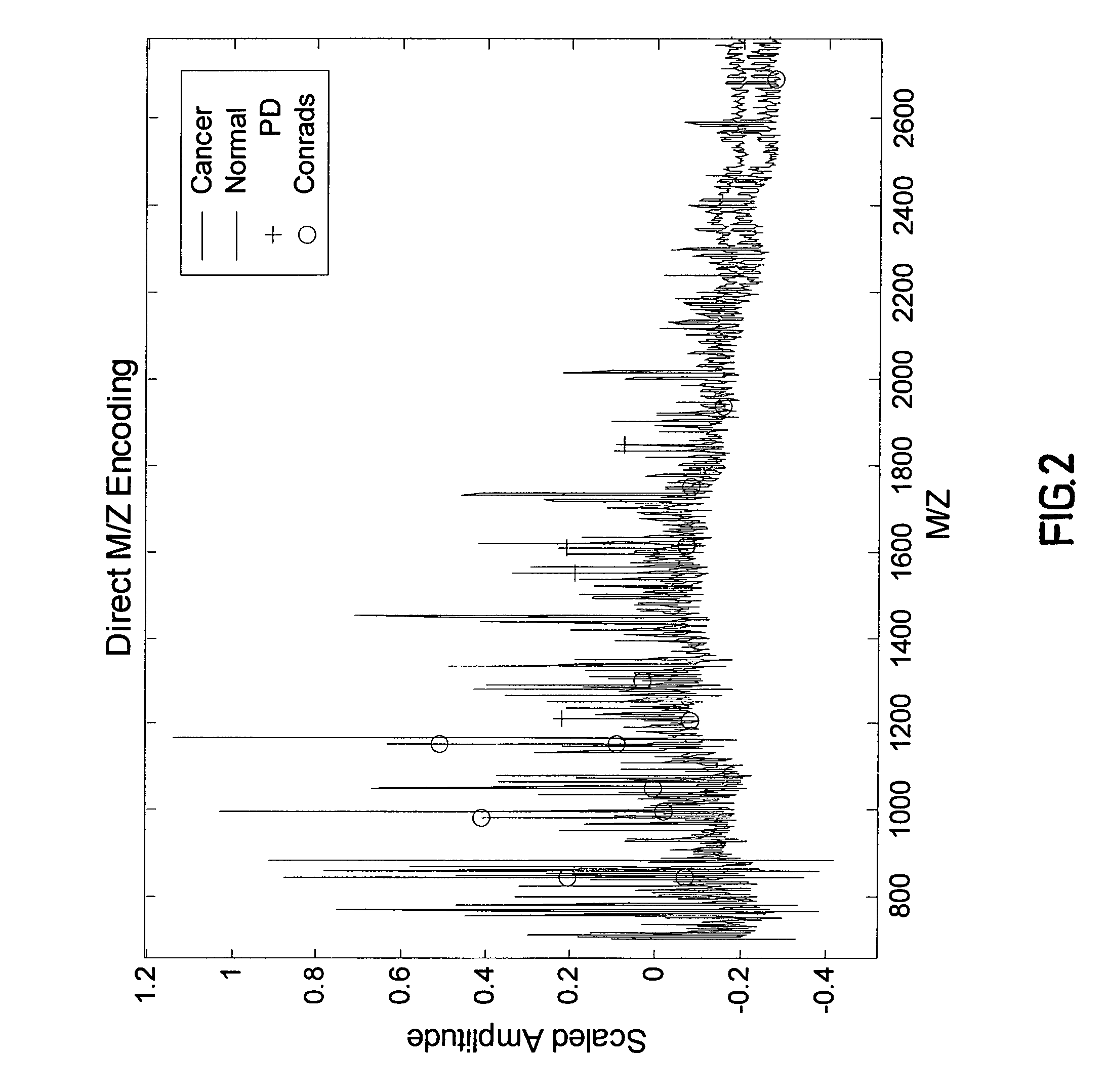Method and apparatus for discovering patterns in binary or categorical data
a binary or categorical data and pattern technology, applied in the field of biological and computational methods, can solve the problems of high probability of individual carrying the gene to contract the disease, high difficulty in detecting causal genetic factors, and genetically much more heterogeneous, so as to save time and cost, improve the accuracy of detection, and improve the effect of sensitivity
- Summary
- Abstract
- Description
- Claims
- Application Information
AI Technical Summary
Benefits of technology
Problems solved by technology
Method used
Image
Examples
experimental examples
[0211]The invention is further described in detail by reference to the following experimental examples. These examples are provided for purposes of illustration only, and are not intended to be limiting unless otherwise specified. Thus, the invention should in no way be construed as being limited to the following examples, but rather, should be construed to encompass any and all variations which become evident as a result of the teaching provided herein.
example 1
Pattern Discovery in Genetic Sequence Data
[0212]Recognizable patterns of genetic polymorphisms are referred to as “haplotypes”. The concept of a “haplotype block”, in which the SNPs within the block take on a small number of the possible permutations, can be used to understand the relationships between SNPs with a certain locale. For example, it has been shown in some cases that, though there may be thousands of theoretically possible SNP permutations within a block, only a handful are actually observed. This has to do with the molecular mechanisms underlying genetic variation. The reduction of features describing a population to a set of haplotype blocks is a practical advantage in that it reduces the overall dimensionality of the problem. As set forth herein for the first time, whether dealing with individual SNPs or haplotype blocks as features, the present invention offers significant advantages over the prior art of analysis of genetic polymorphism.
[0213]The data set forth in t...
example 2
Pattern Discovery in Proteomic Mass Spectrometry Data
[0219]Medical diagnosis depends on the association of quantitative biological measurements with disease. The definition of what constitutes a valid biomarker is broad, encompassing any biological measurement that is indicative of physiological state. Such states may include genetic variations (genetics), gene expression (genomics), proteins or peptide fragments found in bodily fluids or tissue (proteomics), and concentrations of metabolites in cells (metabolomics). Examples of protein biomarkers used for cancer diagnosis are prostate-specific antigen (PSA) for prostate caner and CA-125 for ovarian cancer. However, a problem with single protein biomarkers such as those described above is low sensitivity and specificity. For example, 33% of patients with high PSA levels have benign disease, while PSA measurements within normal ranges may miss up to 65% of prostate cancers. Further, CA-125 is typically not observed at elevated levels...
PUM
| Property | Measurement | Unit |
|---|---|---|
| threshold | aaaaa | aaaaa |
| threshold | aaaaa | aaaaa |
| shape | aaaaa | aaaaa |
Abstract
Description
Claims
Application Information
 Login to View More
Login to View More - R&D
- Intellectual Property
- Life Sciences
- Materials
- Tech Scout
- Unparalleled Data Quality
- Higher Quality Content
- 60% Fewer Hallucinations
Browse by: Latest US Patents, China's latest patents, Technical Efficacy Thesaurus, Application Domain, Technology Topic, Popular Technical Reports.
© 2025 PatSnap. All rights reserved.Legal|Privacy policy|Modern Slavery Act Transparency Statement|Sitemap|About US| Contact US: help@patsnap.com



